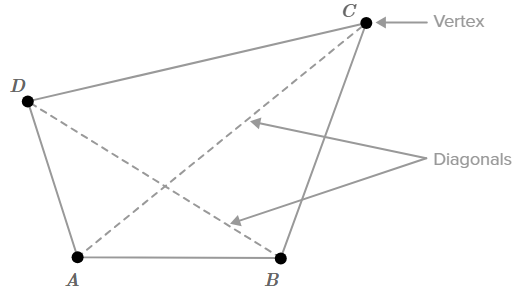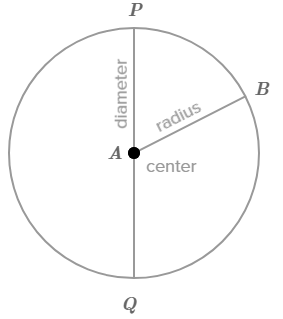Class 6: Mathematics
-
Chapter 1: Knowing Our Numbers5 Topics|2 Quizzes
-
Session 1: International Number System and Indian Number System - Definition, Chart, Interactives and Examples
-
Session 2: Comparing and Ordering Numbers - Steps and Examples
-
Session 3: Estimation of Numbers (Rounding Off Method) - Rules, Steps and Examples
-
Session 4: Roman Numerals - Definition, Rules, Chart, Conversion and Examples
-
NCERT Flip Book (Chapter 1: Knowing Our Numbers)
-
Session 1: International Number System and Indian Number System - Definition, Chart, Interactives and Examples
-
Chapter 2: Whole Numbers5 Topics
-
Session 1: What are Whole Numbers? - Definition, Symbol, Comparison and Examples
-
Session 2: Addition and Subtraction of Whole Numbers - Properties and Examples
-
Session 3: Multiplication and Division of Whole Numbers - Division Algorithm, Properties and Examples
-
Session 4: Patterns in Whole Numbers - Definition, Types and Examples
-
NCERT Flip Book (Chapter 2: Whole Numbers)
-
Session 1: What are Whole Numbers? - Definition, Symbol, Comparison and Examples
-
Chapter 3: Playing With Numbers8 Topics
-
Session 1: What is a Factor? - Properties, Methods, Interactives and Examples
-
Session 2: What is a Multiple? - Definition, Properties, Interactives and Examples
-
Session 3: Prime Numbers and Composite Numbers - Sieve of Eratosthenes, Definition, List, Facts and Examples
-
Session 4: Prime Factorisation - Definition, Methods, Steps and Examples
-
Session 5: Divisibility Rules for 2, 3, 4, 5, 6, 8, 9, 10 and 11 - Properties, Chart and Examples
-
Session 6: Highest Common Factor (H.C.F.) - Definition, Methods, Steps, Interactives and Examples
-
Session 7: Lowest Common Multiple (L.C.M.) - Definition, Methods, Steps, Interactives and Examples
-
NCERT Flip Book (Chapter 3: Playing With Numbers)
-
Session 1: What is a Factor? - Properties, Methods, Interactives and Examples
-
Chapter 4: Integers5 Topics
-
Session 1: What are Integers? - Definition, Symbol, Number line, Absolute Value and Examples
-
Session 2: Comparing and Ordering Integers - Rules and Examples
-
Session 3: Addition of Integers - Steps, Rules, Number Line, Interactives and Examples
-
Session 4: Subtraction of Integers - Steps, Rules, Properties, Number Line, Interactives and Examples
-
NCERT Flip Book (Chapter 4: Integers)
-
Session 1: What are Integers? - Definition, Symbol, Number line, Absolute Value and Examples
-
Chapter 5: Fractions6 Topics
-
Session 1: What are Fractions? - Definition, Representation, Number line, Interactives and Examples
-
Session 2: Types of Fractions - Definition, Interactives and Examples
-
Session 3: Comparing and Ordering Fractions - Methods, Interactives and Examples
-
Session 4: Adding Fractions (Like and Unlike Denominators) - Steps, Interactives and Examples
-
Session 5: Subtracting Fractions - (Like and Unlike Denominators) - Steps, Interactives and Examples
-
NCERT Flip Book (Chapter 5: Fractions)
-
Session 1: What are Fractions? - Definition, Representation, Number line, Interactives and Examples
-
Chapter 6: Decimals11 Topics
-
Session 1: What are Decimals? - Definition, Place Value Chart, Expansion, Types, Conversion and Interactives
-
Session 2: Decimal Fraction - Definition, Types, Conversion, Steps, Interactive and Examples
-
Session 3: Comparing Decimals - Steps, Interactive and Examples
-
Session 4: Uses of Decimal Notation - Conversion Chart and Examples
-
Session 5: Adding Decimals - Steps, Interactive and Examples
-
Session 6: Subtracting Decimals - Steps, Interactive and Examples
-
Session 7: Length Conversion - Metric Units and Customary Units
-
Session 8: Mass (Weight) Conversion - Metric Units and Customary Units
-
Session 9: Capacity Conversion - Metric Units and Customary Units
-
Session 10: Temperature Conversion - Metric Units and Customary Units
-
NCERT Flip Book (Chapter 6: Decimals)
-
Session 1: What are Decimals? - Definition, Place Value Chart, Expansion, Types, Conversion and Interactives
-
Chapter 7: Algebra3 Topics
-
Chapter 8: Ratio, Proportion and Unitary Method3 Topics
-
Chapter 9: Understanding Elementary Shapes2 Topics
-
Chapter 10: Basic Geometrical Ideas7 Topics
-
Session 1: What is Geometry? - Points, Lines, Planes and Solids
-
Session 2: Angles - Definition, Types, Interactives and Examples
-
Session 3: Polygons and Curves - Definition, Types, Interactives and Examples
-
Session 4: Triangles - Definition, Types, Interactives and Examples
-
Session 5: Quadrilaterals - Definition, Types, Properties, Interactives and Examples
-
Session 6: Circles - Definition, Formulae, Interactives and Examples
-
Session 7: What are Parallel Lines? - Transversal, Properties, Angles, Interactives and Examples
-
Session 1: What is Geometry? - Points, Lines, Planes and Solids
-
Chapter 11: Mensuration8 Topics
-
Session 1: Perimeter of Rectangle - Formula, Definition, Interactive and Examples
-
Session 2: Perimeter of Square - Formula, Definition, Interactive and Examples
-
Session 3: Perimeter of Triangle - Formula, Definition, Interactives and Examples
-
Session 4: Area of Rectangle - Formula, Definition, Interactive and Examples
-
Session 5: Area of Square - Formula, Definition, Interactives and Examples
-
Session 6: Area of Triangle - Formula, Definition, Interactives and Examples
-
Session 7: Area of Composite Shapes - Definition, Formula, Interactives and Examples
-
Session 8: Area of Irregular Shapes Using Squared Paper - Definition, Interactives and Examples
-
Session 1: Perimeter of Rectangle - Formula, Definition, Interactive and Examples
-
Chapter 12: Symmetry2 Topics
-
Chapter 13: Data Handling3 Topics
-
Chapter 14: Practical Geometry5 Topics
-
Session 1: Construction of Line Segments - Methods, Steps and Interactives
-
Session 2: Construction of Perpendicular Lines (Perpendicular Bisector) - Steps and Interactives
-
Session 3: Construction of Circles - Steps, Interactives and Examples
-
Session 4: Construction of Angles - Steps and Interactives
-
Session 5: Construction of Some Standard Angles (30°, 45°, 60°, 90°, 120° and 135°) - Steps and Examples
-
Session 1: Construction of Line Segments - Methods, Steps and Interactives
-
NCERT AND EXEMPLAR
Number System1 Topic -
Geometry1 Topic
-
Integers1 Topic
-
Fractions & Decimals1 Topic
-
Data Handling1 Topic
-
Mensuration1 Topic
-
Algebra1 Topic
-
Ratio & Proportion1 Topic
-
Symmetry & Practical Geometry1 Topic
Revolutionary SSC Bot: Unleashing Unmatched Efficiency and Precision
The SSC Bot is an advanced artificial intelligence-powered assistant designed to serve as a comprehensive guide for customers. It utilizes cutting-edge AI technology and natural language processing capabilities to understand and respond to customer queries effectively. With personalized assistance, 24/7 availability, and multilingual support, the SSC Bot ensures a seamless and efficient interaction for customers. It also possesses an extensive knowledge base, assists in troubleshooting and issue resolution, and seamlessly integrates with various platforms.
₹100.00Original price was: ₹100.00.₹49.00Current price is: ₹49.00.
Session 1: Two-Dimensional Shapes – Definition, Types and Interactives
Admin 17/11/2024
In nature, we can observe beautiful geometrical patterns and shapes. A large part of the natural world is geometric. The hexagon is a polygon with six sides and is the most common geometric shape observed in nature. Snowflakes, beehives, and insects’ compound eyes are all made up of hexagons. Why is this? Honeycombs require less wax to be constructed, can be tightly packed, and withstand compression if the grids used to build them are hexagonal. Hexagonal packing best fills a plane with equal size units leaving no wasted space, making it frequently occur in nature.
Natural shapes like the spiral of snails, the concentric rings in tree trunks, the bodies of starfish and even spider webs display intricate geometric designs. Hence, it is important to understand the different 2D shapes and their properties.
What are Two-Dimensional Shapes or Plane Figures?
A plane figure has a dimension of two. It can be compared to a line segment because it has a specific maximum length and width but no height.

Length and width are the dimensions of a two-dimensional figure. In short, we call two-dimensional figures 2-D figures.
Two-Dimensional Shapes: Polygons
A two-dimensional shape bounded by a number of straight lines is called a polygon.
Types of Polygons
A polygon is usually classified by its number of sides, as shown below.
| Number of Sides | Name of Polygon | Shapes |
| 3 | Triangle |  |
| 4 | Quadrilateral |  |
| 5 | Pentagon |  |
| 6 | Hexagon |  |
| 7 | Heptagon |  |
| 8 | Octagon |  |
| 9 | Nonagon (or enneagon) |  |
| 10 | Decagon |  |
Most people prefer to name a polygon with more than ten sides by the number of sides and the suffix “gon.” For example, a 40 sided polygon would be a “40-gon.”
Two-Dimensional Shape: Triangle
Triangles can be classified by their sides and by their angles.
Two-Dimensional Shape: Quadrilaterals
The prefix “quad-” means “four”, and “lateral” is derived from the Latin word for “side”. So a quadrilateral is a four-sided polygon. Since it is a polygon, we know it is a two-dimensional figure made of straight sides. A quadrilateral also has four angles formed by its four sides.

![]() and
and ![]() are the sides, and
are the sides, and ![]() and
and ![]() are the vertices of the quadrilaterals.
are the vertices of the quadrilaterals.
Line segments ![]() and
and ![]() joining two non-consecutive vertices are called diagonals.
joining two non-consecutive vertices are called diagonals.
Two sides like ![]() and
and ![]() having a common endpoint are called adjacent sides.
having a common endpoint are called adjacent sides.
Two-Dimensional Shape: Circle
A circle marks the set of all points at a constant distance from a fixed (centre) point,A,in the same plane. Since the circle has only one centre, you can name the circle by naming its centre. In this way, you can name this circle A.
The distance from the centre point to the circle is called the radius (r). In other words, a line segment joining the centre of a circle with any point on the circle is called a radius (plural: radii) of that circle. AB is a radius of circle A.
The distance from one side of the circle to the other through the centre point is called the diameter (d). In other words, a line segment joining any two points on a circle and passing through the centre of the circle is called a diameter of that circle. The diameter of a circle is twice its radius. PQ is the diameter of circle A.

The perimeter of a circle is called its circumference. The ratio between the circumference and diameter of any circle is π or “pi,” a Greek letter that stands for an irrational number approximately equal to 3.14. Because π is the ratio between the circumference and the diameter, the circle’s circumference is equal to the diameter times π.
C=πd
Remember this!
- A plane figure has two dimensions. It has length, width but no height.
- A polygon is a two-dimensional shape bounded by a number of straight lines. It is classified by the number of sides it has.
- A triangle is a polygon with three sides that can be classified as scalene, isosceles and right based on the length of its sides.
- A triangle can be classified as right, acute and obtuse based on its angles.
- A quadrilateral is a four-sided polygon.
- A circle marks the set of all points at a constant distance from a fixed (centre) point.

